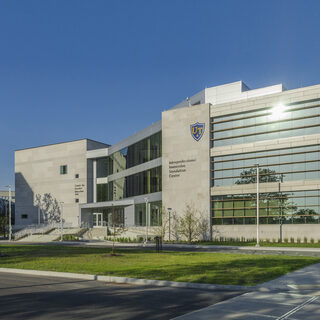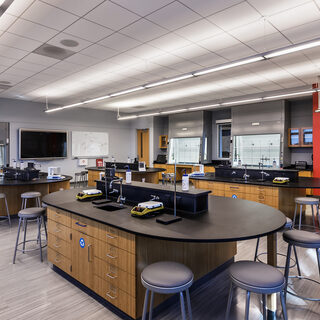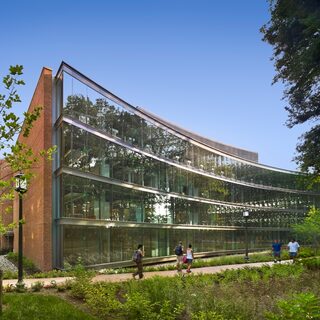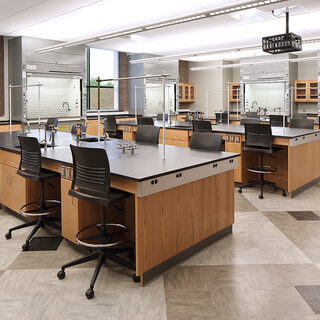Tradeline's industry reports are a must-read resource for those involved in facilities planning and management. Reports include management case studies, current and in-depth project profiles, and editorials on the latest facilities management issues.
Latest Reports
Virtual Immersive Reality Advances Healthcare Education and Research
The University of Toledo’s Interprofessional Immersive Simulation Center (UT-IISC) represents a new technology-driven approach to educating tomorrow’s healthcare professionals. Utilizing state-of-the-art virtual reality environments, the UT-IISC provides interactive and experiential environments for training, education, and research. Giving students, researchers, and clinicians the unprecedented ability to “fly through” organs of the body and visualize them in highly detailed digital 3-D, the center was developed to improve patient safety as well as efficiencies in healthcare.
Johnson Center for Science and Community Life
With its new Johnson Center for Science and Community Life, North Park University has embarked on a unique effort to combine STEM education with student life. The building contains all science classrooms—biology, chemistry, physics, math, engineering, psychology, and general science—plus all aspects of student engagement.
Interdisciplinary Teaching Labs and Shared Equipment Inspire New Pedagogies
Johns Hopkins University’s 105,000-sf Undergraduate Teaching Labs (UTL) replace outdated, dispersed facilities with a single building that increases collaboration across scientific disciplines and offers a new model for research and education. The visually stunning UTL collocates all teaching laboratories for the departments of biology, chemistry, neuroscience, and biophysics, with a shared instrument core. The facility also contains dedicated “project labs” that provide a platform for undergraduate students to participate in actual research.
Science Center
Cheyney University, located 25 miles west of Philadelphia and founded in 1837 as the Institute of Colored Youth (ICY), is the oldest of the Historically Black Colleges and Universities in America. The state-of-the-art Science Center, the first new academic building constructed on campus in 35 years, houses chemistry, biology, physics, and computer laboratories; seminar and lecture rooms; faculty offices; classrooms for the University’s Department of Natural and Applied Sciences; a planetarium; and an external greenhouse.
Wellesley’s Multiple-Architect Approach to Campus Renewal Accelerates Implementation
Just one year after Wellesley College trustees approved a long-term campus renewal plan, the college had three projects in construction and six in design. In all, some $137 million worth of work, roughly 25 percent of the total plan, is currently underway, thanks to Wellesley’s bold approach: At once sweeping and granular, the process departed from traditional master planning by employing multiple architecture firms and incorporating up front many activities typically not seen months or even years into the design workstream.





